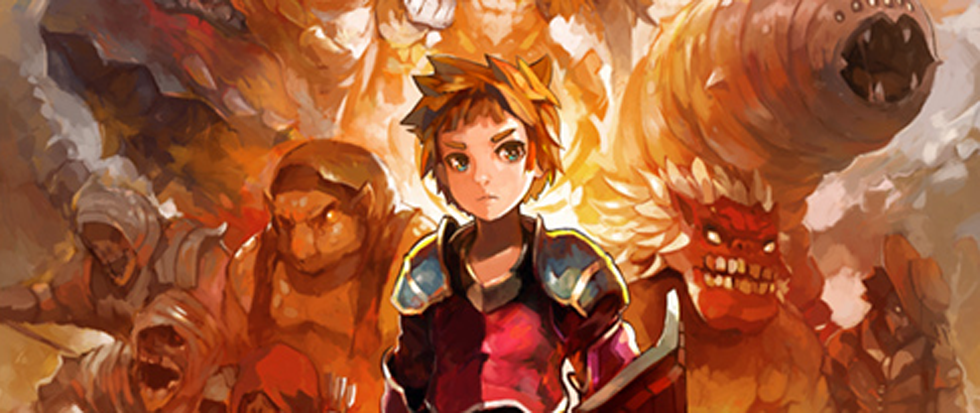
Chasm Emerges from the Depths
It’s neither a secret nor a molten take to proclaim Kickstarter success to be a double-edged sword. The crowdfunding platform has been around long enough to facilitate spellbinding highs built atop a mountain of ossified, unrealized dreams. There’s a sub-industry of experts to dress up your pitch media, consult on the logistics, and manage the community that a fully Kickstarted project must wrangle. Most projects inevitably spawn into so much more than the initial nugget, and an entire team must be prepared. Because once funded but so far from completion, you are no longer really working for yourself anymore.
Chasm was one of a number of sparkle-eyed young games I and many other folks threw in on five or so years ago. Developers Bit Kid have dutifully kept the backers up-to-date without exploding expectations or over-sharing the mangy details of producing an indie game for half a decade. They’ve taken it to PAX and other shows, doling out succulent dollops of gameplay and explanation behind their lavishly pixelated and procedurally generated “metroidvania” pitch. In the same amount of time, other games have either evaporated from the public eye, or arrived to both minimal and maximum acclaim, subjected to the harsh light of existing in the public. Set free from their own creative minds and impulses, moments of brilliance and bitter compromises.
So Chasm is now in a familiar and precarious position of actually existing in front of the eyes and digits of those who backed or followed the hype. Can it live up to the ideas seeded five years ago and left to germinate and sprout over such a long time? Of course it can’t, and in some ways it doesn’t. Which isn’t to say it’s a failure, as it does exactly what it said it would do all along with elegance and aplomb. But the field is much more crowded than it was even five years ago, and an idea that stood out then hand help but shine a little less once actually real and surrounded by titles with similar visual and gameplay aesthetics.
This game hews very closely to its influences, with Super Metroid’s moody elevators and snaky pathways and Castlevania: Symphony of the Night’s everything else—a nimble back-dash, weapons galore, swarms of distinctly dancing enemies, and a charming if thin story. But it also pulls in the contemporary scene’s love of randomness, though here that randomness is mostly seasoning. Of course, spice usually makes or breaks a meal, but Spelunky, No Man’s Sky, Dead Cells, and so many others built their bones on procedural generation. In Chasm, you’ll only really see a difference in layout if you start an entirely new game, and it’s not entirely clear within the title why one would do that after finishing a first run. There’s townsfolk to rescue and the standard unavailable areas until you find the right item, level advancement and whatnot, and it’s all great. But only on the unlockable permadeath mode will you see a different dungeon every time, and really, you don’t need a special mode to do that yourself (but I suppose it’s handy in keeping you honest).
So this is a game ostensibly crafted for multiple playthroughs, but not like Spelunky, which rests on a foundational “permadeth” mode that simply restarts with a new layout (built on established patterns) after every death. But will I play another run after beating the game? Most likely I will just to see how another map pattern might settle itself, but I’m not it will be enough to carry me through the end again and again.
Having come fellow metroidvania Hollow Knight not too long ago, with its decidedly locked in and borderline exhaustingly large map, I can’t help but wonder if Chasm might a little meatier had Bit Kid built out a more robust and permanent world. Because this game is hitting almost all the right notes, but I feel like I’m flying through it and am not certain I will even experience the procedurally generated nature of the map design. It’s possible I will only ever know one layout, as I do for Hollow Knight and the library of Castlevania titles.
And that’s fine, because Chasm is tight. I love the visuals, though SNES/Genesis throwback artwork is perhaps no longer de rigueur. Each area’s music is leitmotif-laden and infectious without becoming an irritating earworm. Combat really changes depending on your weapon, and the enemies incorporate a wide variety of attacks that control the space around them in challenging ways. You can’t merely slam that attack button, as doing so leaves you wide open and positioning is key. Sloppy play is quickly punished.
Chasm ticks all the boxes, but at the same time suffers from its own success. I want it to be just a little bit more. Perhaps three, or even two years ago, it would have dominated the resurgent retro-platforming adventure genre, but it currently feels like one flat-footed step away from what I dreamt it might be when backing it oh so many years ago. Chasm hasn’t managed to surpass its idols though it lives up to them very ably and admirably at this point, and I suspect there will be a number of future updates that may send it flying from where it currently teeters in my heart. It just can’t help but feel like Chasm could never have lived up to the hype of eve its moderate crowdfunding so long ago, left to stew in the juices of each backer’s imagination for so long. Such is the curse of Kickstarter success.





